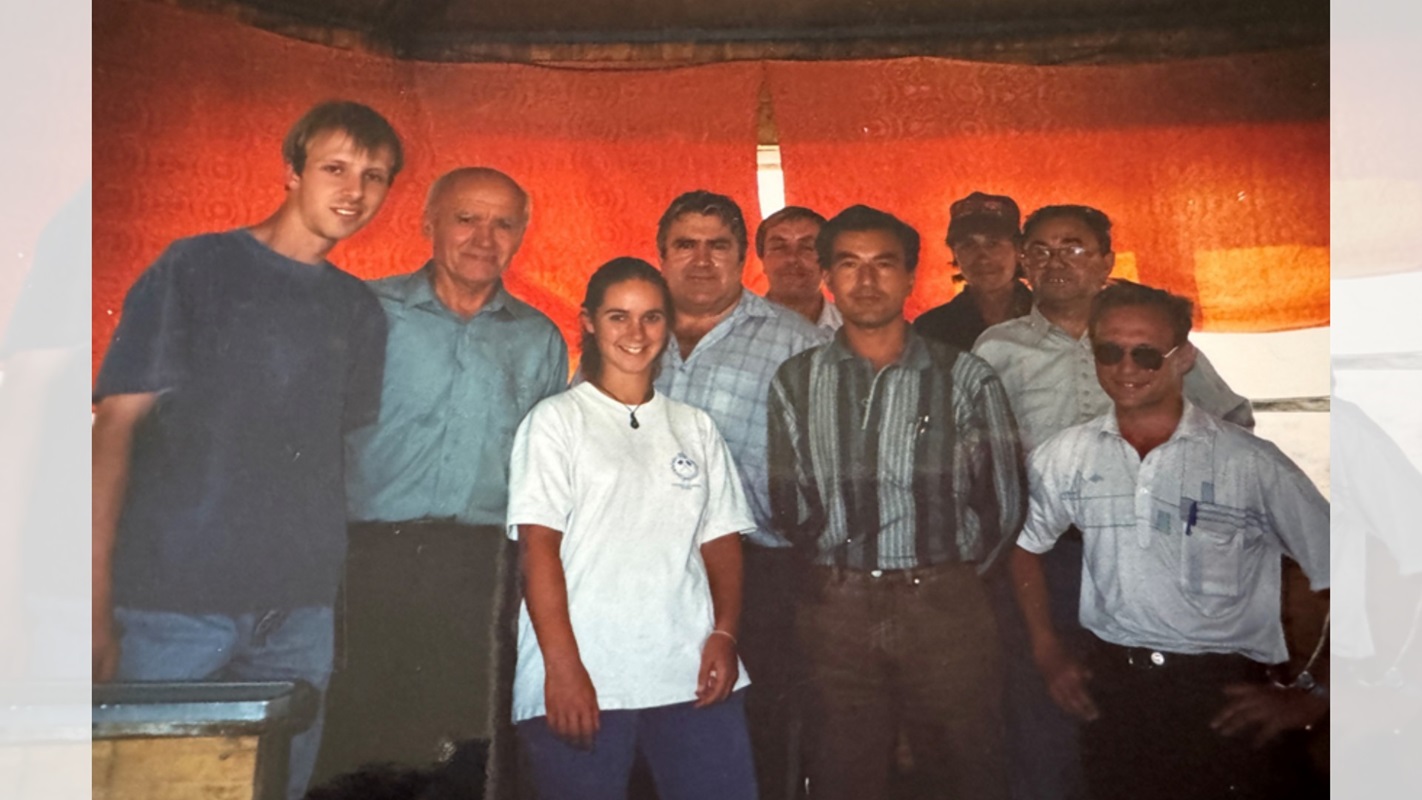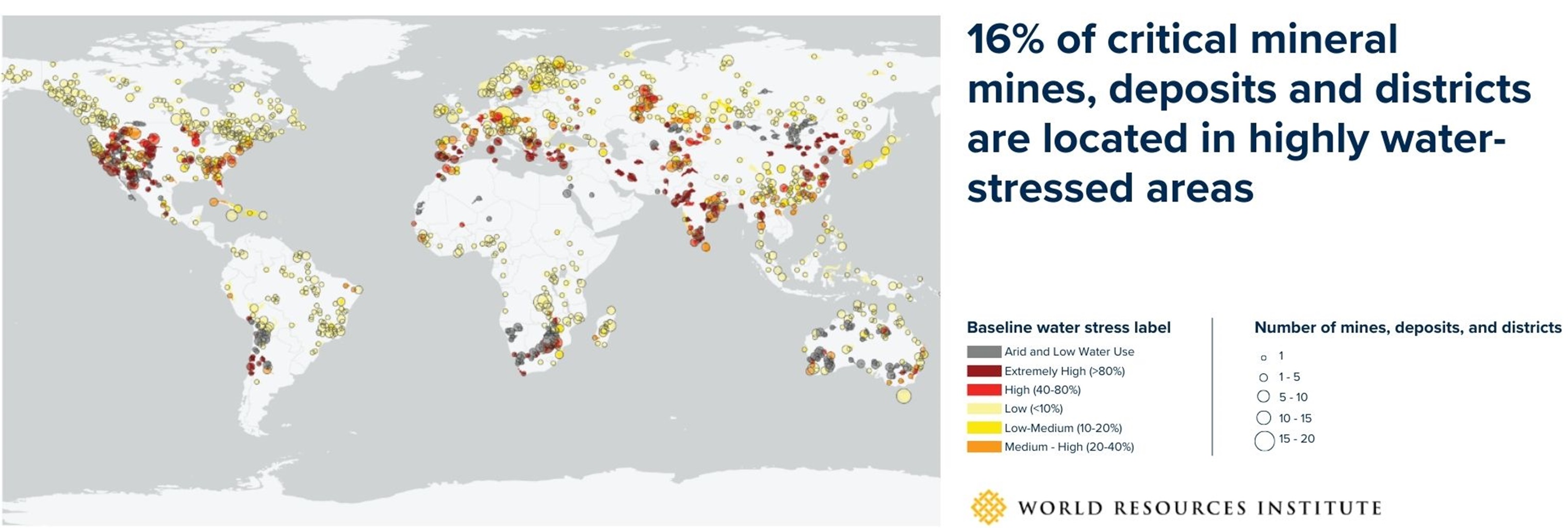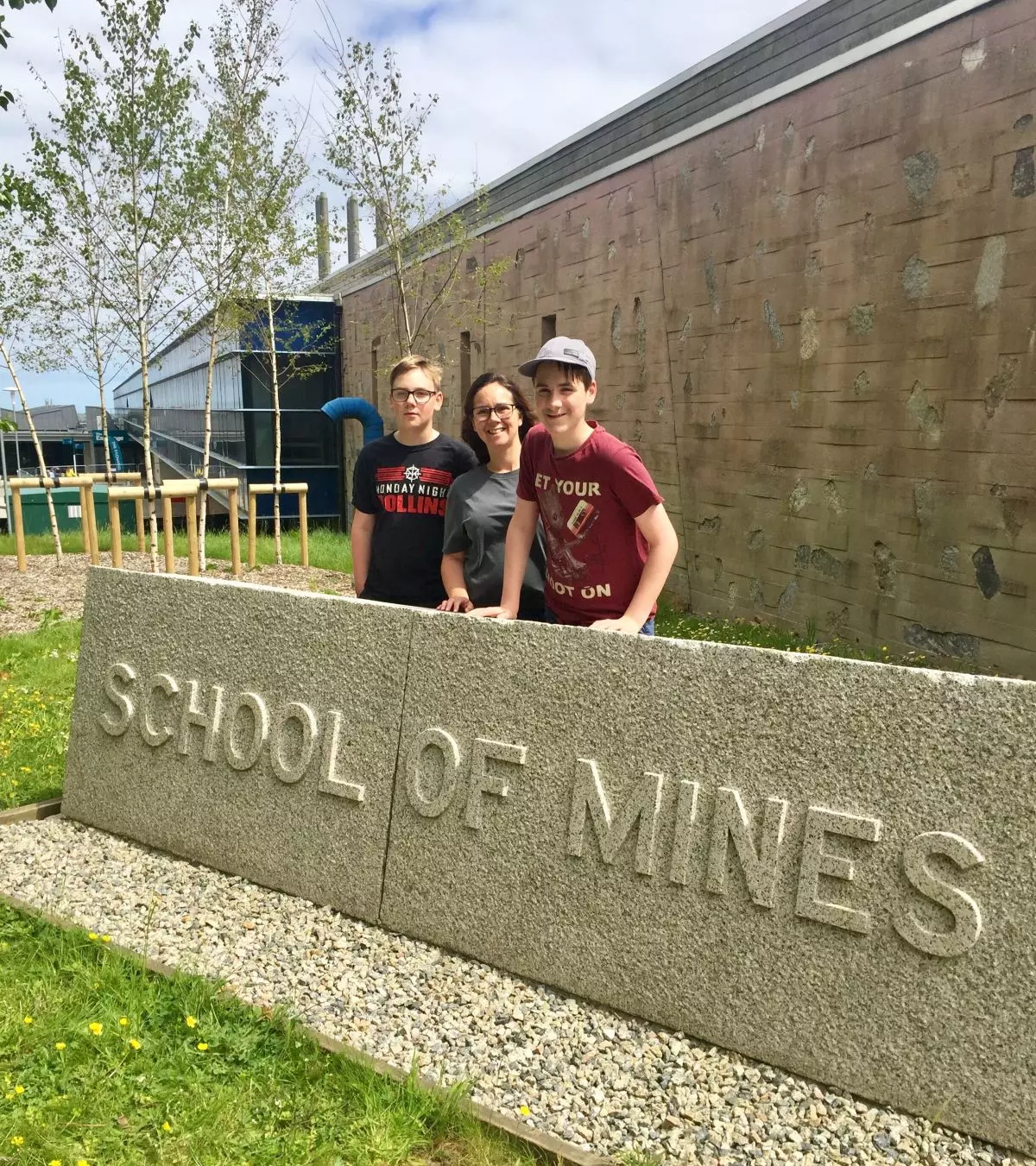As we celebrate World Water Day, we have an opportunity to reflect on the crucial role water plays in our lives. Access to clean drinking water and sanitation is essential for the wellbeing of people, the environment, and the economy. Unfortunately, many still lack these basic necessities – a situation that is expected to worsen as the climate changes and becomes more variable.
World Water Day is also an opportunity to highlight the importance of water stewardship and the need for collective action to safeguard our water resources for future generations. Nowhere is this truer than the mining industry. We sat down with our own Lucy England, Innovation Manager, to talk about the ways the industry is working to improve its performance in this most critical of areas.
What first interested you in the mining industry?
Growing up in Cornwall in the UK, I was surrounded by the remnants of the region's rich mining history and was fascinated by the ingenuity of the miners. However, as I grew older, I also began to appreciate the environmental impact of mining and the toll it had taken on the land. Rivers here – such as the Teign, Seaton and Fal – remain contaminated by historic mine sites, despite longstanding attempts to clean them up. It is an example of how mining can impact the quality of local water resources, even many years after the mines have closed.
These childhood experiences have led me to where I am today, using innovation to improve both the legacy and future of mining.

How much water does mining consume?
Water is vital to the mining industry. Copper mining, for example, can consume nearly 200 tonnes of water for every tonne of metal produced. The numbers for gold are even higher – more than three and a half times that amount of water1. For the industry as a whole, it has been estimated that global water withdrawals range from 6 to 8 billion cubic metres per year2.
Exacerbating this challenge is the fact that many mining activities are located in areas where water is scarce. According to the World Resources Institute, 16% of critical mineral mines, deposits, and districts are located in highly water-stressed areas3. And 30-50% of copper, gold, iron ore, and zinc production is in areas of high water-stress. In Chile, 80% of copper production is in extremely high water-stressed and arid areas… by 2040 it will be 100%4.

Ore grades are also falling, meaning miners need to process more material to extract the same amount of finished metal or mineral. This generates more waste tailings and uses even more water and energy. Meanwhile, demand for many metals and minerals is expected to rise as society works to meet its sustainable development ambitions and transition to a net-zero economy.
It is no understatement to say that water presents a profound and multifaceted strategic risk to the mining industry with technical, economic, environmental, and socio-political implications. Reducing water withdrawals and improving mine water use is therefore essential to ensuring the long-term sustainability of the industry and the critical metals and minerals it supplies.
What can be done to address this water challenge?
In the mining industry, we are already working hard to minimise our reliance on fresh water sources. In drier regions like Chile, miners have installed large desalination plants to source usable water from seawater and other sources. However, this approach can be in direct opposition to decarbonisation goals, if powered by fossil fuels.
To avoid a situation where the solution to one problem halts progress on another, it is so important to view the mining and mineral processing flowsheet as a whole and as early in the development cycle as possible. At the conceptual phase of any mining project, for example, advanced water modelling is critical, as it presents different options for sourcing, reducing, re-using, and recycling water at different points in the mine’s life.
When it comes to developing less water-intense processes and equipment, our MissionZero programme is actively exploring ways to reduce water consumption through dry grinding, coarse particle flotation, and various tailings treatment techniques.
How can mines reduce the amount of water being sent to tailings?
A mine’s tailings storage facility (TSF) is often the area of greatest water loss, whether that is via evaporation or seepage, or through water entrainment within the tailings themselves. A key aim for any mine site should thus be to minimise the volume of water going to its TSF.
One proven way of doing this is to recover more water from the tailings by optimising the tailings dewatering process. This can be as simple as improving existing tailings thickener performance. Here at FLS, we have worked on several projects where we were able to significantly reduce the amount of water going to tailings, for example, via a mechanical upgrade to the existing tailings thickener or by employing an advanced process control solution. Paste and thickened tailings management solutions are also an extremely effective means of recovering and re-using valuable process water.
Another solution I see gaining traction in the mining industry is dry stacking. This involves pressure-filtering wastewater from the mining process, recovering up to 95% of the process water, and then stacking the remaining dry waste material into landforms on site. Although more expensive upfront than wet TSFs, dry stacking facilitates very high levels of water recycling and re-use, significantly reducing a mine’s freshwater draw.
The advantages of dry stacking does not end there though. It also lowers energy consumption and costs associated with tailings storage. And it increases the stability of the deposited tailings, mitigating dam failure risks: another critical target for the industry in the wake of a number of catastrophic TSF failures. Take all of these benefits together, and I believe dry stacking should be much more widely embraced by the industry.
Going forward, we are looking at a whole-process approach to tailings water reduction, starting at the initial comminution stage. And this takes us into one of my principal focus areas: coarse particle flotation.
Can you tell us more about your work with coarse particle flotation (CPF)?
CPF technologies – such as our own coarseAIR™ solution – are an emerging trend within the mining industry, and one that I believe will be at the heart of sustainable mining flowsheets of the future. They tackle a challenge in traditional mineral processing, whereby mined rock must be ground to a relatively small size to recover the valuable metals or minerals it contains. This consumes a lot of energy and generates a significant amount of very fine material, which is much harder to dewater than coarser particles.
Using CPF, however, we can increase the size of the particles from which we can recover those valuable materials. This means less energy is consumed at the grinding stage; it also produces a coarser waste stream, which allows greater water recovery. In fact, by incorporating CPF into the circuit, we believe it is possible to reject about 60% of the waste material and recover its associated water far earlier in the process. Importantly, the technology is expected to be applicable to many metal ores needed in the green transition.
Are you also looking at dry processing flowsheets?
Yes, we are developing products and solutions for a future where dry processing is a must at mine sites. This includes replacing traditional ‘wet’ grinding solutions, such as ball and SAG mills, with dry grinding technologies, such as high-pressure grinding rolls (HPGR) and vertical roller mills (VRM). Both offer the potential to achieve 100% water-free comminution circuits.
HPGR mills operate by grinding material under pressure between to two rollers. The technology is proven in the mining industry, where we have successfully delivered over 160 HPGR mills to mining customers. VRMs on the other hand are a newer technology within the mineral processing space, although they have operated in the cement industry for decades. Here, raw material is dropped onto, then crushed between, a rotating table and several adjustable rollers, which travel around the edge of the table.
We have recently established a VRM pilot test facility at our Materials Testing and Research Centre in Salt Lake City in the US to develop its application in mineral processing.
I think it is also important to say here that there is no one-size-fits-all approach to water-sustainable mining. Miners will have to carefully model new flowsheets to find the technologies that deliver the best solutions to their specific challenges. We can support them in doing so and, together, I strongly believe we can find a route to meet the world’s growing need for metals and minerals, while also protecting both our neighbouring communities and habitats, and the planet as a whole.
Is technology the only way to meet the water stewardship challenge?
There is no doubt that new technologies are needed to meet the water stewardship challenge. But they are not the complete picture. In addition to technical solutions, we must also improve transparency, communication, and accountability. It is vital we keep local communities, investors, and other stakeholders informed about our efforts and set achievable and science-based targets to improve water management in practice.
Sustainable water stewardship is a challenge. But it is not a challenge we can ignore. We must find ways to ensure equitable access to water resources, while minimising our own water consumption. It is a mission that I - and all of us here at FLSmidth - are committed to.

We believe we can sustainably provide the essential minerals and metals that society needs and create a better future for all.
Photo: Lucy and her two sons at the Camborne School of Mines in Cornwall
2. Brinson A., Sykes C., 2021. Zero Emission Copper Mine of the Future – The Water Report, International Copper Association
3. https://www.wri.org/insights/critical-minerals-mining-water-impacts
4. https://www.mckinsey.com/capabilities/sustainability/our-insights/climate-risk-and-decarbonization-what-every-mining-ceo-needs-to-know